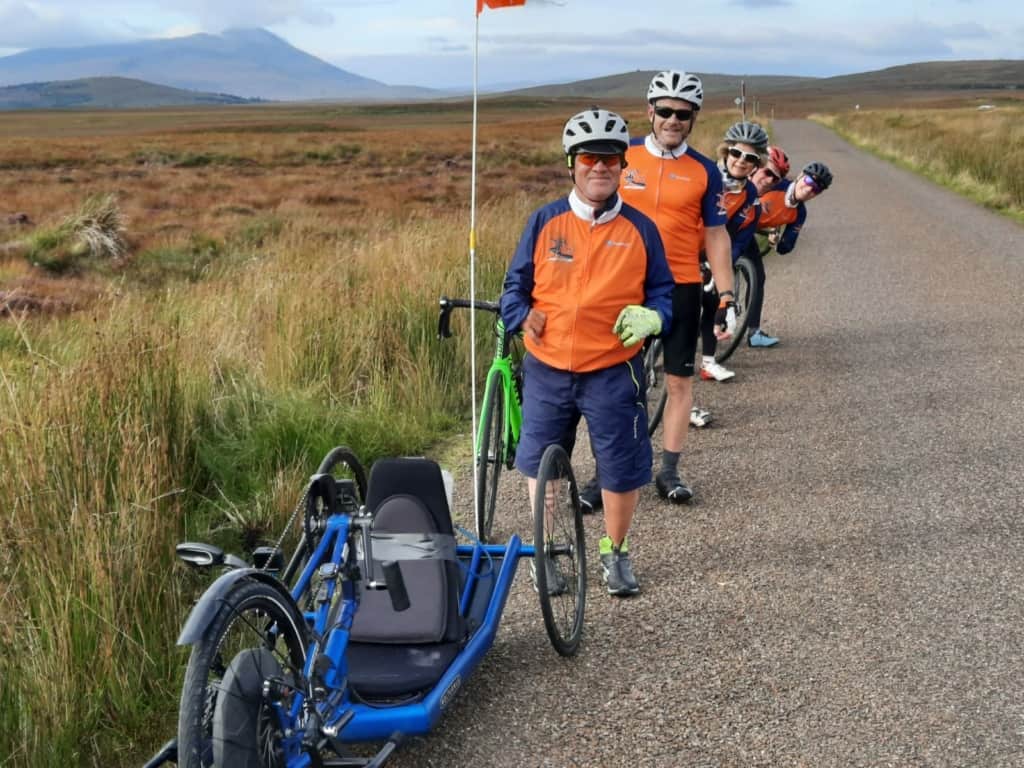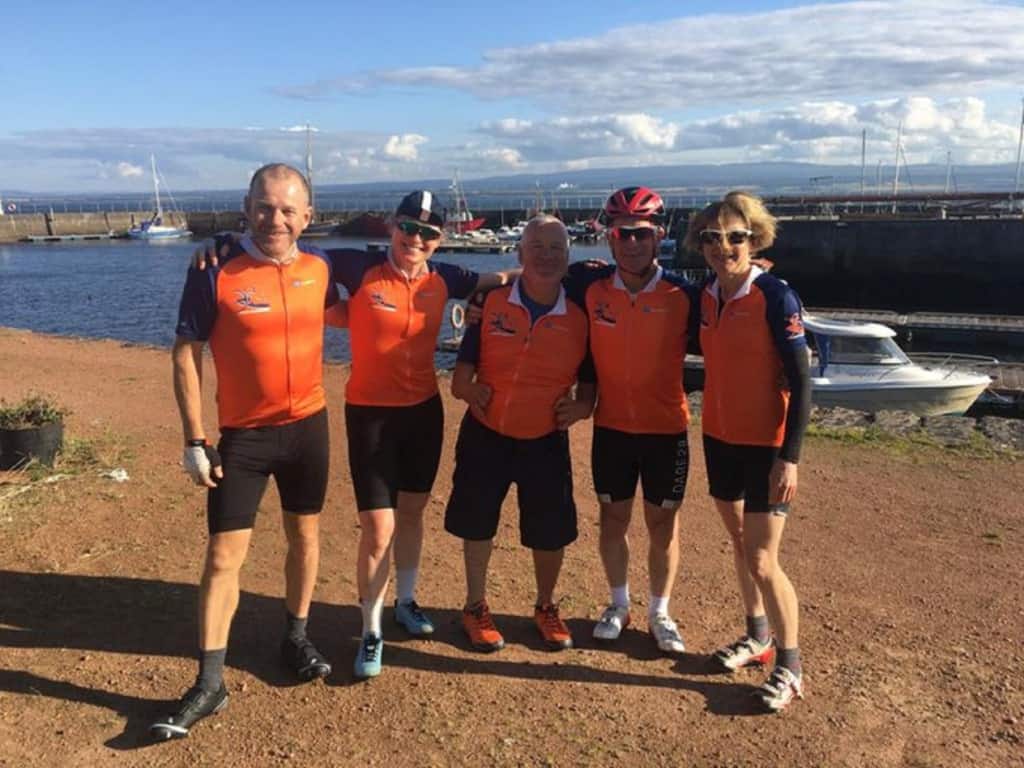We recently reached out to Andrew Paddison, a handcyclist who has cycled 500 miles across the north coast of Scotland, to share his story. He very kindly accepted, and so we hope you enjoy the following blog post! You can also remain up-to-date about his cycling adventures via Twitter and Facebook.
Happy memories: cycling during childhood
I cycled from an early age – this was made possible by the trike my father converted for me. He bought an adult model with a basket on the rear, removed the right pedal and put a metal stand in its place for me to rest my full-length artificial leg. He also turned the trike into having a single fixed gear, which I pedalled using my left leg. I had this trike from the age of 11 to 17, after which I passed my driving test.
It was only after I took early retirement 8 years ago that I became interested in cycling – and more specifically handcycling – again. I purchased my first handcycle 5 years ago and loved it! Cycling allows me to exercise, live a healthier lifestyle and enjoy the camaraderie of other cyclists. Plus, it gives me the opportunity to test myself physically and mentally.

500 miles of handcycling
This year, I challenged myself to handcycling 500 miles around the north coast of Scotland, using a recognised route that covered 32,000 feet of climbing in 6 days. I had originally arranged a bigger challenge, but COVID-19 meant that it would be difficult; instead, I changed my focus to Scotland within a month of starting the challenge.
I live in the middle of Wales, and so the training involved plenty of hill climbs. I would go out once a week, covering 40-50 miles and about 4,500 feet of climbing. To improve my stamina in between these rides, I’d exercise on indoor rollers every day.
The challenge was certainly tougher, but shorter, than last year’s LEJOG. Apart from the first day (torrential rain with headwind of 40mph gusts), I covered 90 miles with over 7,000 feet of climbing each day. The scenery and views from the climbs were spectacular!
I like to raise money when completing challenges and chose SafeLives this year. It’s a charity that currently needs much help due to lockdown seeing an increase in domestic violence.

The difficulties of handcycling
The only – but fundamental – obstacle I face is that I’m unable to get on and off the handcycle without a lift. As I have short arms, I can’t leverage myself out nor lift my artificial leg out of the stirrup. This isn’t a problem on my indoor trainer, as I take my prosthetic leg off and have it placed in a way that allows me to slide on and off, but when I’m outdoors this isn’t possible. It means that I’m at the mercy of others when using my handcycle, always having to cycle with another cyclist (but thankfully I have very good cycling mates who are only too willing to lift me on and off it).

